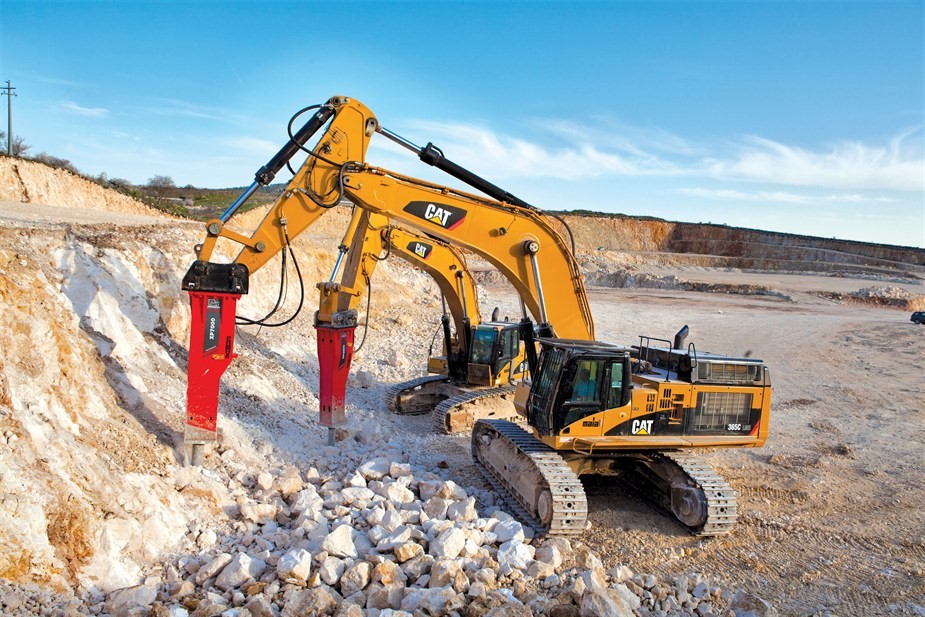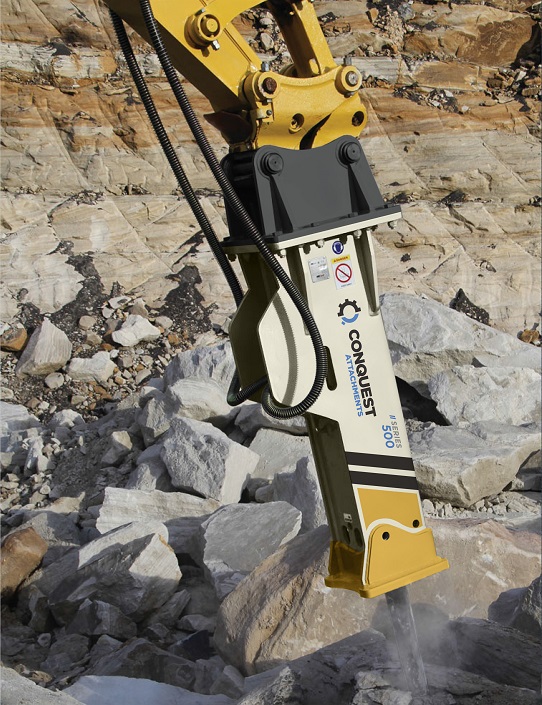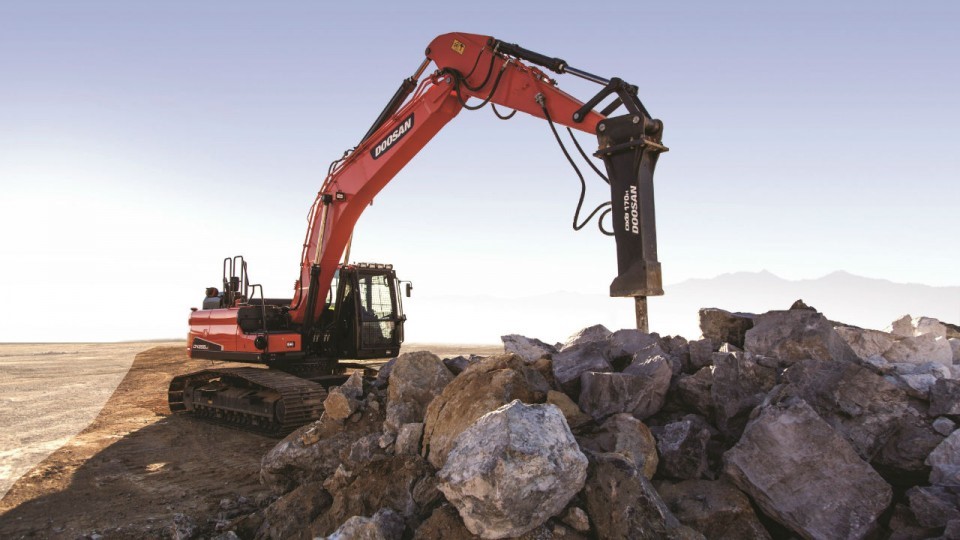A breaker is a powerful percussion hammer fitted to an excavator for demolishing concrete structures or rocks.
It is powered by an auxiliary hydraulic system from the excavator, which is fitted with a foot-operated valve for this purpose. Demolition crews employ the rock breaker for jobs too large for jackhammering or areas where blasting is not possible due to safety or environmental issues.
Rock breakers are widely used in mining and landscaping applications. Although it can be both stationary and mobile, the rock breaker is most commonly used as a mobile tool because it is more flexible.
With simple but efficient working principle, the purpose of the rock breaker is to apply force to a small piston and to create a mechanical advantage when the constant pressure is redirected through the pipes on a bigger area, producing high force. Today, there are many different types of rock breakers and they differ in terms of weight, size and usage. Every rock breaker is designed to be used for a specific application. The one thing they all have in common is the strong and steel made construction. The weight of the head determines the balance and the efficiency of the whole rock breaker. Logically, the heavier the head, the quicker and more efficient the breaking procedure. Lighter rock breakers are suitable for breaking lighter and smaller rocks.

With a chisel head, rock breakers are also suitable for clearing debris or for brushing applications. This rock breaker is especially used by geologists to clear dust from rocks or fossils. However, all rock breakers are very efficient for a variety of geological explorations.
These days, hydraulic breakers are used more than standard breakers. Hydraulic rock breakers deliver higher force and are quite efficient for larger construction projects. They are based on the theories of fluid mechanics and are consisted of pipes, a motor, pump, special hydraulic liquid and an output device.
Hydraulic rock breakers are very versatile and can be used for construction tasks, demolition works, metal forging and quarry applications. Hydraulic rock breakers crush in both forward and backward directions, and stop once the digging tool is raised. When compared with standard rock breakers, hydraulic rock breakers have a more environmental-friendly impact and generate less noise.
Breakers vs. Blasting
Using a hydraulic breaker instead of explosives to free rock from the quarry face is becoming more and more common. As hydraulic hammers and carriers increase in size and durability, sound attenuation is improved, and residential and business developments encroach upon urban quarries, there may be a few applications where rock breakers work.
Field results reveal five advantages to using a breaker for primary breaking, mainly in comparison to blasting rock.
-
Selective Extraction
Quarrying methods using explosives typically mix together varying mineral grades within a deposit. This can reduce quality or make the stone unsuitable for some applications. Hydraulic breakers allow selective quarrying of individual rock layers, possibly providing higher-priced products. -
Higher Quality Standards
Blasting can cause microcracks in quarried rock which may decrease rock quality and selling price. Blasting also produces a certain volume of unsaleable fines. By reducing fines, the saleable production volume in the required grain sizes can be increased. -
Continuous Production
Before blasting, the danger zone near the quarry face must be cleared of people and machinery, often interrupting production. Primary and secondary breaking using hydraulic breakers allows continuous production and decreases movement of mobile crushers and conveyor systems. Processing and conveying equipment can consistently remain close to the working face. -
Fewer, Smaller Crushers
Breaker operators can determine the fragmentation of the rock before initial crushing. This can eliminate the need for a large primary crusher. Material can be fed directly to downstream crushers, saving on investment and maintenance costs. -
Environmental Aspects
Quarries facing severe restrictions on noise and vibration from blasting may find hydraulic breakers an effective alternative. Another environmental advantage of hydraulic breakers is the resulting lower bench heights, which can reduce reclamation costs.
Conquest Hydraulic Breakers

Conquest Attachments' hydraulic breakers are designed to provide efficiencies, minimize machine wear and improve productivity. They are durable, effective for a range of applications, including rock, concrete and slab breaking, road, sidewalk and curb construction, demolitions, excavations, and more. Conquest Attachments provides service for their hydraulic breakers and a comprehensive 2-year warranty. Conquest offers purchase, rent, lease and RPO options for breakers.
Conquest Hydraulic Breaker Features:
• Available for 0.8 – 55 Ton machines
• Shock Absorbing Design
• Noise Reduction Technology
• 2 Year Factory Warranty
• Meets ISO 9001 Standards
• Local Parts and Service
For more information on Conquest hydraulic breakers, contac us!

